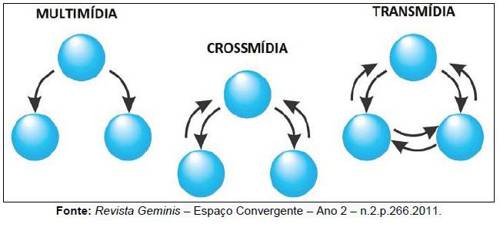
FAQ About The Impact of Transmedia Storytelling in Pop Culture

What is transmedia storytelling?
Transmedia storytelling is a narrative technique where a single story or narrative experience is told across multiple platforms and formats. Each medium offers a unique perspective or part of the story, allowing audiences to engage with and explore the narrative in diverse ways. Rather than repeating the same content across platforms, each segment of the narrative leverages the strengths of its medium to build a rich and cohesive story world.

How does transmedia storytelling differ from traditional storytelling?
Traditional storytelling typically involves a single medium, such as a book, movie, or television show, where the entire narrative is contained. In contrast, transmedia storytelling expands the narrative across multiple media formats, each contributing a unique element to the storyline. This approach allows for different entry points into the narrative and provides audiences opportunities to engage with the story world in various ways, enhancing depth and interactivity.

Why is transmedia storytelling important in pop culture?
Transmedia storytelling is significant in pop culture because it enhances audience engagement and participation. By extending a story across different platforms, creators can reach wider audiences and offer more interactive and immersive experiences. This approach allows fans to explore story worlds more deeply and participate in them, creating dedicated fan communities and fostering a sense of ownership and investment in the narrative.

Can you give examples of successful transmedia storytelling in pop culture?
Some notable examples of successful transmedia storytelling include the Star Wars franchise, which spans films, TV series, books, comics, games, and more, each contributing unique elements to the story world. Similarly, the The Matrix series utilized films, anime, video games, and comics to expand their narrative. These examples illustrate how stories can grow and evolve across platforms, engaging audiences in various ways.

What role do fans play in transmedia storytelling?
Fans play a crucial role in transmedia storytelling as active participants who explore and even contribute to the narrative. Their engagement helps to amplify the story's reach and impact as they create and share content, partake in discussions, and collaborate on fan-made projects. This collaborative aspect of fandom can drive deeper investment and creativity, ultimately enhancing the transmedia experience.

How does transmedia storytelling enhance audience engagement?
Transmedia storytelling enhances audience engagement by offering multiple access points to a narrative, encouraging exploration and interaction with the story world. By consuming various segments across different media, audiences become more involved and invested in the narrative, often discovering details that enrich their understanding and appreciation of the overarching story.

What challenges do creators face in developing transmedia stories?
Creators face several challenges in transmedia storytelling, including ensuring narrative coherence across platforms, managing fan expectations, and designing content that leverages each medium's strengths. Additionally, coordinating the release of content across various media can be complex, requiring careful planning and resources to maintain quality and consistency.

Is transmedia storytelling only applicable to fictional narratives?
While transmedia storytelling is often associated with fictional narratives, it is not limited to them. Non-fiction stories, educational content, and real-world narratives can also benefit from a transmedia approach. For example, documentary projects might use films, interactive websites, and social media platforms to present different facets of a story, enhancing engagement and understanding through diverse formats.

How has technology influenced transmedia storytelling?
Technology has dramatically influenced transmedia storytelling by enabling content creation and distribution across diverse platforms. Digital tools and platforms, such as social media, mobile apps, and online forums, provide creators with innovative ways to engage audiences and present narratives in interactive, multimedia formats. This technological evolution has expanded the possibilities for storytelling, allowing for more complex and immersive story worlds.

What makes a transmedia story successful?
A successful transmedia story provides compelling content that resonates across different media while maintaining a coherent and engaging narrative. Key elements include well-developed characters, a consistent story world, and innovative use of each platform's unique attributes. Additionally, fostering audience participation and community can greatly enhance the reach and impact of the story.

How does transmedia storytelling benefit franchises?
Transmedia storytelling benefits franchises by expanding their reach and appeal, creating additional revenue streams, and building dedicated fan bases. By utilizing different media, franchise owners can explore various aspects of their story worlds, keeping audiences engaged with fresh content. This approach not only sustains interest in the franchise but also allows for innovative storytelling possibilities that enrich the narrative experience.

What is the future of transmedia storytelling in pop culture?
The future of transmedia storytelling in pop culture looks promising, as technological advancements continue to provide new opportunities for creative narrative experiences. With the rise of virtual reality, augmented reality, and interactive media, creators have more tools to craft immersive and interactive stories. As audiences demand more engaging and participatory experiences, transmedia storytelling is poised to play a significant role in the evolution of modern storytelling.

How can creators ensure narrative coherence in transmedia storytelling?
To ensure narrative coherence in transmedia storytelling, creators should maintain a detailed story bible that outlines the characters, plot, themes, and world-building elements. Consistent communication among all creative teams involved in the project helps ensure that different story elements are aligned. It also involves careful planning and coordination of content release strategies across various media to maintain a unified narrative.

What industries benefit the most from transmedia storytelling?
Industries such as entertainment, gaming, publishing, and broadcasting benefit significantly from transmedia storytelling. It allows these industries to expand their storytelling capabilities and reach larger audiences. Educational and marketing sectors can also use transmedia strategies to enhance engagement and deliver content in versatile and interactive ways.

How do transmedia narratives impact fandom cultures?
Transmedia narratives have a profound impact on fandom cultures by providing fans with multiple avenues to explore and connect with their favorite story worlds. This approach encourages active participation, from creating fan art and fiction to discussing theories and interpretations with fellow fans. As a result, fandoms often become communities of collaboration and creativity, strengthening the bond between the narrative and its audience.

Are there any common misconceptions about transmedia storytelling?
A common misconception is that transmedia storytelling simply involves adapting the same content across multiple formats. In reality, true transmedia storytelling involves crafting unique and complementary story segments for each platform, using each medium's strengths to enhance the narrative. Another misconception is that transmedia storytelling is only suitable for large franchises, whereas it can be effectively used for smaller, niche projects as well.

How do creators decide which platforms to use for transmedia storytelling?
Creators typically choose platforms based on the strengths and characteristics of each medium, as well as the target audience's preferences. Factors such as the type of content, budget, and storytelling goals play significant roles in the decision-making process. A thoughtful approach involves selecting platforms that can best enhance the narrative and meet the needs of the audience while staying true to the creative vision.

Can transmedia storytelling affect the way audiences consume media?
Yes, transmedia storytelling can influence how audiences consume media by encouraging them to explore stories across different platforms actively. This approach can change traditional passive consumption habits into interactive and participatory experiences, as audiences seek to piece together narratives from various sources. It fosters a more engaged and loyal audience, eager for diverse storytelling experiences.

How does transmedia storytelling align with the concept of participatory culture?
Transmedia storytelling aligns closely with participatory culture, as it encourages audiences to actively engage with and contribute to the narrative. It supports collaboration among fans and between creators and audiences, often blurring the lines between content producers and consumers. This approach fosters a sense of community and collective ownership over the story world, promoting an inclusive and interactive storytelling environment.

What skills are essential for creating effective transmedia stories?
Key skills for creating effective transmedia stories include strong storytelling abilities, creativity, and an understanding of various media platforms. Familiarity with audience engagement strategies and the ability to coordinate different creative teams are also crucial. Additionally, technological proficiency in digital content creation and distribution can significantly enhance the development and execution of transmedia narratives.
